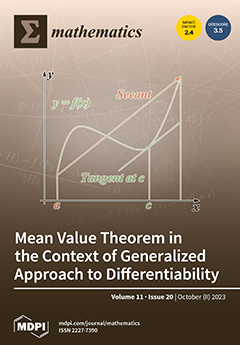Type 1 diabetes, a chronic condition characterized by insulin deficiency, is associated with various complications and reduced life expectancy and is increasing in global prevalence. Maintaining glycaemic control in children with type 1 diabetes, as reflected by glycated hemoglobin levels (A1C), is a
[...] Read more.
Type 1 diabetes, a chronic condition characterized by insulin deficiency, is associated with various complications and reduced life expectancy and is increasing in global prevalence. Maintaining glycaemic control in children with type 1 diabetes, as reflected by glycated hemoglobin levels (A1C), is a challenging task. The American Association of Diabetes (ADA), the Pediatric Endocrine Society, and the International Diabetes Federation (ISPAD) recommend the adoption of a harmonized A1C of <7.5% across all pediatric groups. Our retrospective study included 79 children with type 1 diabetes and aimed to identify determinants pivotal to forecasting glycemic control, focusing on a single A1C cut-off value and exploring how machine learning algorithms can enhance clinical understanding, particularly with smaller sample sizes. Bivariate analysis identified correlations between glycemic control and disease duration, body mass index (BMI) Z-score at onset, A1C at onset above 7.5 g/dL, family income, living environment, maternal education level, episodes of ketoacidosis, and elevated cholesterol or triglyceride. Binary logistic regression stressed the association of ketoacidosis episodes (β = 21.1,
p < 0.01) and elevated A1C levels at onset (β = 3.12,
p < 0.01) and yielded an area under the receiver operating characteristic curve (AUROC) of 0.916. Two-step clustering emphasized socioeconomic factors, as well as disease complications and comorbidities, and delineated clusters based on these traits. The classification and regression tree (CART) yielded an AUROC of 0.954, slightly outperforming binary regression, providing a comprehensive view of interactions between disease characteristics, comorbidities, and socioeconomic status. Common to all methods were predictors regarding ketoacidosis episodes, the onset of A1C levels, and family income, signifying their overarching importance in glycaemic control. While logistic regression quantified risk, CART visually elucidated complex interactions and two-step clustering exposed patient subgroups that might require different intervention strategies, highlighting how the complementary nature of these analytical methods can enrich clinical interpretation.
Full article





